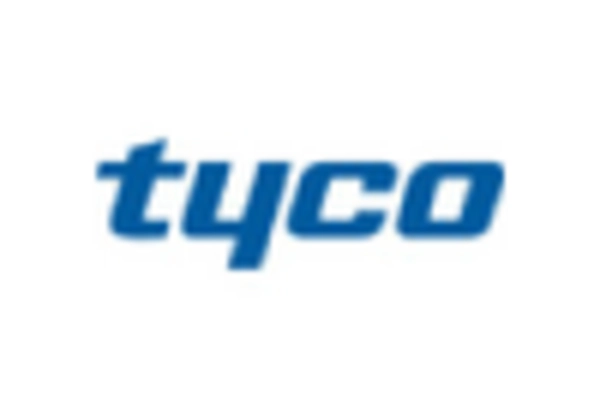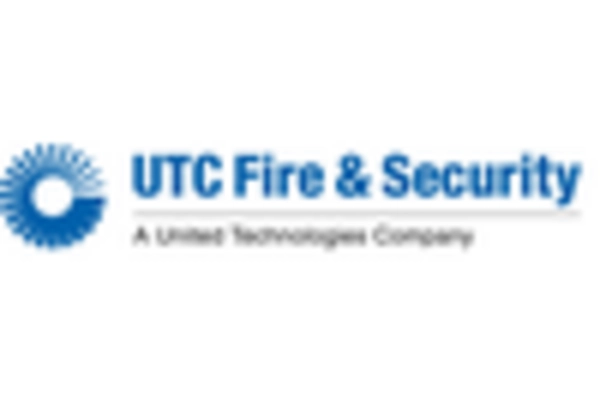Rising Demand for Fire Safety Solutions
The Aspirating System Market is experiencing heightened demand for fire safety solutions across various sectors. With increasing awareness of fire hazards and the potential for catastrophic losses, businesses are investing in advanced fire detection systems. The market for fire safety equipment, including aspirating systems, is expected to reach USD 30 billion by 2026. This growth is fueled by stringent safety regulations and the need for reliable fire detection in commercial and industrial settings. As organizations seek to mitigate risks, the adoption of aspirating systems is likely to become more prevalent, thereby driving market expansion.
Integration with IoT and Smart Technologies
The Aspirating System Market is increasingly integrating with Internet of Things (IoT) and smart technologies. This integration allows for real-time monitoring and data analytics, enhancing the effectiveness of fire detection systems. By connecting aspirating systems to centralized management platforms, organizations can achieve improved situational awareness and quicker response times. The market for smart fire detection systems is projected to grow significantly, with estimates suggesting a CAGR of around 10% over the next few years. This trend indicates a shift towards more intelligent and interconnected safety solutions, which could reshape the landscape of the aspirating system market.
Increased Focus on Environmental Sustainability
The Aspirating System Market is also being shaped by an increased focus on environmental sustainability. Organizations are becoming more aware of their environmental impact and are seeking solutions that align with sustainable practices. Aspirating systems, which can be designed to minimize false alarms and reduce unnecessary resource usage, are gaining traction. The market for eco-friendly fire detection solutions is anticipated to grow, as companies prioritize sustainability in their operations. This shift towards environmentally responsible practices may lead to a greater adoption of aspirating systems, thereby influencing market dynamics in the coming years.
Technological Innovations in Aspirating Systems
The Aspirating System Market is witnessing a surge in technological innovations that enhance detection capabilities. Advanced sensors and algorithms are being integrated into aspirating systems, allowing for quicker and more accurate smoke detection. This is particularly relevant in high-risk environments such as data centers and industrial facilities, where early detection is crucial. The market is projected to grow at a compound annual growth rate (CAGR) of approximately 8% over the next five years, driven by these technological advancements. As organizations increasingly prioritize safety and efficiency, the demand for sophisticated aspirating systems is likely to rise, further propelling the market forward.
Growing Urbanization and Infrastructure Development
The Aspirating System Market is being influenced by rapid urbanization and infrastructure development. As cities expand and new buildings are constructed, the need for effective fire safety measures becomes paramount. Urban areas, characterized by high population density and complex structures, require advanced fire detection systems to ensure safety. The construction sector is expected to grow at a rate of 5% annually, which will likely drive the demand for aspirating systems. This trend suggests that as urban environments evolve, the aspirating system market will continue to expand, catering to the needs of modern infrastructure.

















Leave a Comment